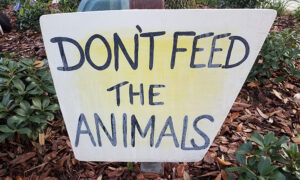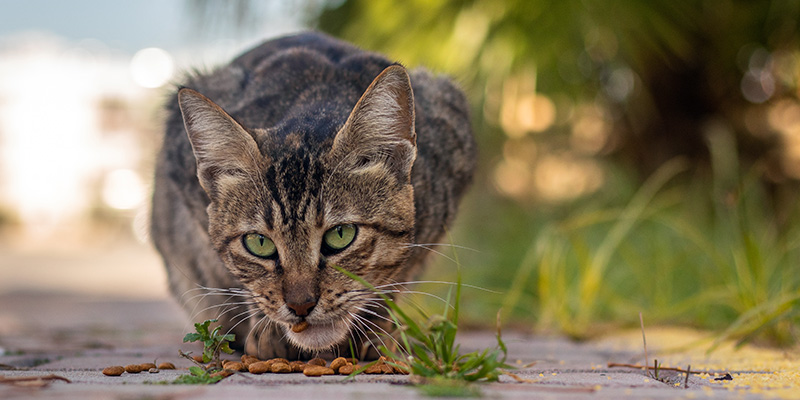Are your HOA residents feeding stray cats? While the intention behind it may be good, feeding strays can have bad repercussions. If your board encounters this problem, there are some recommended courses of action to take.
The Downsides of Residents Feeding Stray Cats
Cats can be very loving companions, making them a popular choice for pets, but not all cats have a place to call home. In fact, there are an estimated 41 million stray cats in the United States alone. Some of these cats are in shelters, but a good chunk of them are left to roam the streets. With such many stray cats, it would not be surprising if a few of them wandered into your HOA neighborhood.
When residents encounter stray cats, their first instinct may be to feed them. After all, who can resist the adorable meows of a hungry kitten? But, stray animal feeding, especially in an HOA, can have several consequences.
Here are the pitfalls of feeding stray cats in an HOA community.
1. They Might Overrun the Community
When you allow residents to feed stray cats, you’re basically painting the community into a corner. A habit of feeding strays will cause them to think that the HOA is a stable food source. This will push them to keep coming back to the community when they’re hungry, even bringing other wild animals and pests with them. Pretty soon, you’ll have an association infested with strays.
An HOA overrun with strays not only lowers curb appeal but can also lead to a host of other problems. These include a higher risk of diseases, pet injury, and property damage, which are discussed in the succeeding points.
 2. They Might Infect Pets With Diseases
2. They Might Infect Pets With Diseases
Cute as they may be, stray cats can bring disease. Because strays don’t receive veterinary care, they often carry diseases that can be transferred to other animals. A lifetime of roaming dirty streets and interacting with other strays usually does that. If your community is home to many pets, their health and well-being can be jeopardized when introducing strays into the neighborhood.
3. They Might Get Into Fights With Pets
Diseases aren’t the only safety risk that stray cats can bring. Stray animals tend to be more aggressive, having had to fend for themselves all their lives. Thus, when encountering a resident’s pet, they can quickly go into fight mode, especially if competing for food.
4. They Might Damage Property
If you’ve ever kept a cat as a pet, you know they have a propensity for destroying valuables. Their sharp claws can tear through couches, rip up curtains or blinds, and shatter potted plants. Stray cats are no different. While you can somewhat protect the items inside your home by closing your windows, you can’t do the same for your garden plants and lawn furniture.
How to Keep Residents From Feeding Stray Cats
Homeowners associations have a duty to maintain curb appeal and preserve property values. When there are too many feral cats in the community — as a result of residents feeding stray cats — curb appeal and property values can quickly plummet. Resident satisfaction will also go down along with them. So how can an HOA board limit stray cats in the association? Is there even a way to prevent residents from feeding the strays?
Fortunately, an HOA does come equipped with certain powers, including the power to enforce rules. These rules can range from architectural standards to rental restrictions. An association can also have rules governing homeowners’ behavior, including feeding stray animals.
Here are some ways to prevent residents from feeding stray cats.
1. Explain That Pet Rules Don’t Apply to Strays
Some associations have a strict no-pets policy. This is more common among condo communities, where residents live in such close quarters, but you will also find this policy in some single-family communities. That said, many more communities allow residents to keep pets but with added restrictions. For instance, homeowners may be required to keep pets on a leash when outside and pick them up after them.
While stray cats are animals, they don’t fall under the definition of pets. As such, the HOA’s pet rules don’t apply to them. A resident may not feed a stray cat even if they keep it on a leash somewhere in the neighborhood. Additionally, residents may not keep stray animals on their property unless they decide to adopt them.
If a resident really wants to care for a stray cat, they can adopt it and provide it with proper veterinary care. Of course, this is under the assumption that the HOA even allows pets and that the resident does not violate the HOA’s pet policy. The association may also require the resident to complete certain forms per the pet rules. When they adopt the stray cat, the pet rules will then apply.
2. Adopt Rules and Levy Fines for Noncompliance
 It is not enough to simply have rules regarding pets. An HOA board that wishes to limit stray cats in the community should also adopt rules on stray animals. A common rule is prohibiting residents from feeding the strays and avoiding any kind of interaction with them. Residents should resist the urge to feed the strays.
It is not enough to simply have rules regarding pets. An HOA board that wishes to limit stray cats in the community should also adopt rules on stray animals. A common rule is prohibiting residents from feeding the strays and avoiding any kind of interaction with them. Residents should resist the urge to feed the strays.
While an HOA can hope that the rules themselves curb stray animal feeding, many residents will still go against these rules. To prevent noncompliance, the board should also impose a fine system if it doesn’t already have one in place. Assuming state laws and the governing documents allow it, an HOA can fine an owner for feeding a stray after, provided that notice and an opportunity to be heard are given.
3. Encourage TNR Participation
One of the biggest problems with stray animals is that they can breed. When this happens, the number of strays in the community will inevitably increase.
An HOA should encourage residents to partake in a local trap-neuter-return (TNR) program to avoid this. In this program, stray cats are humanely trapped, sterilized to prevent breeding, and returned to the place where they were originally caught. This program controls the stray cat population and provides existing strays with basic veterinary care.
Taking Action
As you can see, there are several problems with residents feeding stray cats. If allowed to go on, such a practice can bring disease, pet injury, and property damage to your community. Before long, your association will be littered with strays. By adopting rules and communicating with residents, your HOA board can limit the number of strays in your neighborhood.
Condo Manager is the leading provider of HOA management software. Our software works for self-managed associations as well as HOA management companies. Call us today at (800) 626-1267 or contact us online for a free demo!
RELATED ARTICLES:
- Top 10 Important HOA Rules Every Homeowner Should Know
- Don’t Have An HOA Community Garden? Time To Start One Now
- Condominium Repairs: Who Is Responsible? Condo Owners Or The COA



